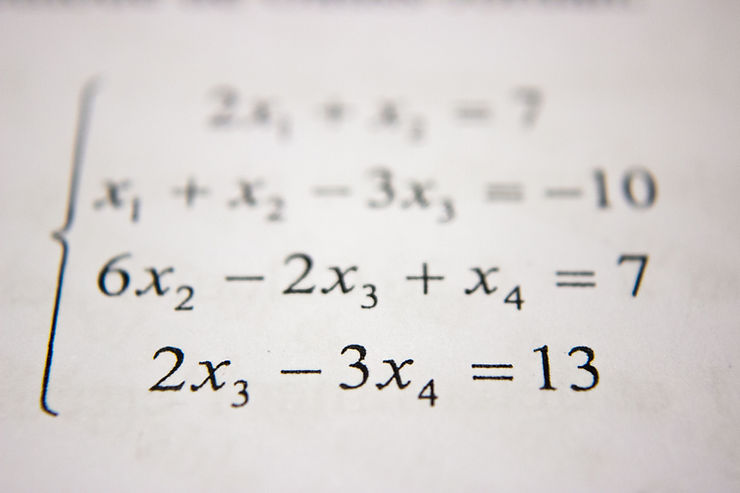How to Solve Simultaneous Equations Without Getting Confused
- Rofeeah

- Oct 7, 2024
- 4 min read
Solving simultaneous equations is one of those math topics that often leaves students scratching their heads. It’s common to feel overwhelmed when you first encounter them. But here’s the good news: once you break them down, simultaneous equations are easier to understand than they seem!
This guide will show you simple methods to approach and solve simultaneous equations without confusion, giving you the confidence to tackle them in exams or homework. Let's dive right in!

What Are Simultaneous Equations?
Before we get into solving them, let’s understand what simultaneous equations actually are.
Simultaneous equations are two or more equations that you solve together because they share variables. For example:
3x + 2y = 12
4x - y = 5
Here, we have two equations with two variables, x and y. The goal is to find values for x and y that satisfy both equations at the same time. That’s why they’re called "simultaneous" — we solve them together.
Why Are They Useful?
Simultaneous equations are used in real-life situations where two conditions must be met at once. For example, they help calculate prices when you’re buying items with different costs or solving physics problems involving force and motion.
Now, let’s break down the easiest ways to solve simultaneous equations without feeling confused.
Methods to Solve Simultaneous Equations
1. The Substitution Method
This method is one of the simplest ways to solve simultaneous equations, and it works like a charm when one of the variables is easy to isolate.
Steps:
Start by solving one of the equations for one variable.
For example, solve the second equation for y:
y = 4x − 5
Substitute this expression for y into the first equation:
Replace y in the first equation:
3x + 2(4x − 5) = 12
Simplify the equation and solve for x:
Expand and combine like terms:
3x + 8x − 10 = 12
11x − 10 = 12
Add 10 to both sides:
11x = 22
Divide by 11:
x = 2
Now that you know x, substitute it back into the equation for y:
Use x = 2 in the equation y = 4x − 5:
y = 4(2) − 5
y = 8 − 5
y = 3
So, the solution is x = 2 and y = 3
2. The Elimination Method
If substitution seems tricky or if neither equation is easily solved for one variable, the elimination method might be easier for you.
Steps:
Multiply one or both equations so that when you add or subtract them, one of the variables cancels out.
For example, let’s work with the same equations:
3x + 2y = 12
4x −y = 5
To eliminate y, multiply the second equation by 2:
3x + 2y = 12
8x − 2y = 10
Now add the equations:
3x + 8x = 12 + 10
11x = 22
x = 2
Substitute x back into one of the original equations to find y:
4(2) − y = 5
8 − y = 5
y = 3
Again, the solution is x = 2 and y = 3. The elimination method is especially helpful when you want to avoid fractions.
3. The Graphical Method
While not as common, the graphical method is another way to solve simultaneous equations. It involves graphing both equations on a coordinate plane and finding the point where the two lines intersect.
Steps:
Rewrite both equations in the slope-intercept form (y = mx + b).
Plot the two lines on a graph.
The point where the lines intersect represents the solution (x, y).
Although this method can be a bit more time-consuming, it’s a great way to visualize the solution.
Common Mistakes to Avoid
Even with these simple methods, students can still run into confusion. Here are some common mistakes to watch out for:
Forgetting to substitute correctly: Double-check when substituting one variable for another to avoid errors.
Not simplifying enough: After substitution, remember to simplify the equations fully before solving.
Mixing up signs: Pay close attention to positive and negative signs, especially when using the elimination method.
Practice Makes Perfection
The more you practice solving simultaneous equations, the more natural they will feel. It’s important to try different methods and see which one works best for you. Some problems are easier with substitution, while others are faster with elimination. Experiment and find your groove!
Why Solving Simultaneous Equations Matters
Mastering simultaneous equations is a critical skill in math because they pop up in various topics, including geometry, algebra, and even calculus. Beyond math class, knowing how to solve these equations can be useful in real-world situations like budgeting, programming, or even science projects.
Conclusion
Solving simultaneous equations doesn’t have to be confusing! By using simple methods like substitution, elimination, and graphical solutions, you can break down any problem step-by-step. Keep practicing, stay patient, and soon you'll be solving these equations with ease.
Don’t forget that every complicated equation is just a few small steps waiting to be solved! Keep practicing, and in no time, you’ll feel confident with any set of simultaneous equations that come your way.






Commentaires